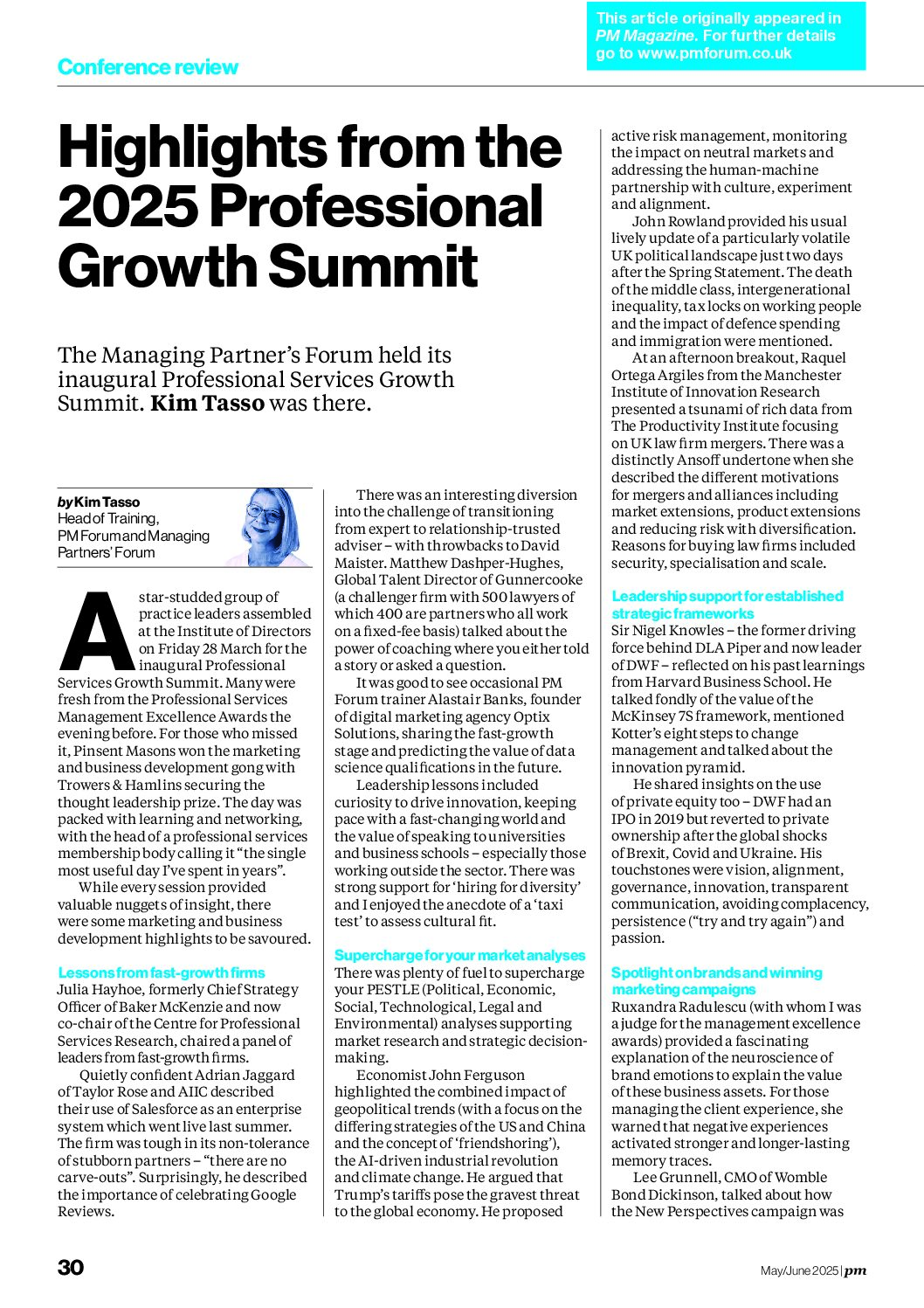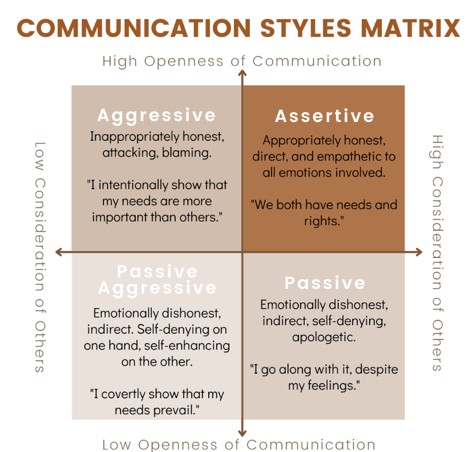
This article on “Private client marketing – competing in the digital era” was published in the November 2017 edition of The Law Society’s PS magazine for private client lawyers http://communities.lawsociety.org.uk/private-client/ps-magazine/
Whilst we should be excited about the potential of digital technologies to help busy private client lawyers with their business development activities, it seems that sometimes it just gives many an excuse to abdicate responsibility.
Marketing a private client practice is essentially about relationship marketing . You maintain relationships with your clients, who continue to instruct you and recommend you to others. You also need a structured approach to developing referrer relationships – with other lawyers, accountants and IFAs – who hopefully will provide you with a stream of recommendations.
Digital technologies do not replace this fundamental human element. In this article, I explain that digital technologies can enhance your activities – particularly those aimed at raising your profile, conveying key messages and establishing and maintaining contact with new and existing clients and referrers.
Articulate your goals and analyse your market
The starting point for any private client team or lawyer is to be clear about your goals. An annual fee or profit target is not detailed enough. How much do you want to make from existing or new clients, from private individuals and through third parties? Is that 10 cases at a value of £10,000 or 100 cases at £1,000?
Do some analysis of your existing client base and the source of clients and work. And, while you are there, analyse the profitability of different types of work. Is your team mostly experienced seniors offering high-level advice, or juniors doing low-level transactional work? How do you want the shape of your practice to evolve in the future?
Then, ‘reality test’ your goals. Does your local area have enough of the ‘right’ sorts of clients? How accessible are they? How heavy is the competition? Do the services you provide match the emerging needs in the market?
Articulating your goals is important. Only SMART (specific, measurable, achievable, relevant, time-bound) goals enable you to measure effectiveness. It is easier to select the appropriate business development strategy when you know what you are trying to achieve. They help the team understand what you are trying to achieve so that they can align and co-ordinate their activities.
Whilst digital technologies make it easy to track how many visitors there are to your website or how many social media engagements are achieved, do you have effective systems to measure the conversion rate, the cost of generating that activity and the profitability of any clients you gain?
Agree your strategy for markets and messages
Before you can decide on which digital strategies to deploy, you need to know your target market. Too many private client lawyers chase ’high-net-worths‘ or the ‘elderly market‘, which are too broad.
There’s a lot of information on the internet to help you really focus on a specific segment in the market. ‘Niche’ approaches make it possible for smaller firms to compete effectively with larger firms. And digital technologies – such as search engine optimisation (SEO) and social media – make it easy to target those small, specialist segments.
Once you have identified your niche – or developed some personas of the types of clients you want to reach – you can then attempt to differentiate your service to appeal directly to their needs and stand out from your competitors.
Key messages are known as value propositions – how is it that your firm delivers superior value – and hold the key to both supporting a premium pricing strategy and driving your content management plan.
Your positioning, proposition and values should be reflected in your branding and “look and feel” of everything (physical and digital). This can be challenging when you have colleagues providing other legal services – especially if they serve commercial markets.
What digital strategies can you deploy?
Promotional communication campaigns
In the past, private client marketing tended to be ad-hoc and piecemeal. Some lawyers would favour community networking, others would provide lectures and a few might dabble in social media. But this demonstrates that there is often a lack of understanding that there are three core activities to address in an effective campaign.
- Marketing – Understanding your market(s) and developing suitable services at the right price and with the right promotion to generate interest and enquiries
- Selling – Sometimes online, but often through telephone and face-to-face contact with potential clients who you need to convert
- Relationship management – Keeping in touch with and developing existing clients who may reappoint you, and referrers who may refer further clients
Once you have a handle on your sales pipeline (where work comes from and how long it takes to move from contact to conversion) and are clear about your goals, target market and key messages, then you can develop a communications campaign blending the appropriate off-line and digital techniques.
Integrated communications campaigns are important for a number of reasons. They ensure that sometimes cash-heavy digital activities are properly integrated with time-consuming selling and relationship management activities. Campaigns allow each lawyer in the team to play to their strengths. Campaigns enable you to spread the business development load across the team. Campaign effectiveness is easier to measure than one-off activities such as seminars.
Internal marketing and cross-selling
Many private client lawyers forget to start marketing on their own patch. Larger firms will have sophisticated digital technologies – intranets and internal chat facilities, for example – that make it easy to ensure that everyone understands what the private client team can do for their clients. Without such technologies, there must be a structured plan for communicating with others in the firm and in cross-selling to established clients.
Brochures and newsletters
Short, compelling leaflets provide reminders to others in or visiting your firm. They are also useful for people to download from your website. Regular newsletters – whether printed or digital – are an excellent way to stay front of mind to a wide variety of clients, contacts and referrers, and raise awareness about new services.
You will need to consider what your audience(s) will want to read about – they are unlikely to be interested in lengthy law reports, for example, which will be of little practical use to most clients. And you will need to devote time and attention to maintaining a good database – encouraging people to sign up via your website, bearing in mind the new data protection rules .
Web site
Many private client departments fill their websites with internally-focused information about their expertise, rather than identifying specific markets and issues and presenting the information in a meaningful way to potential clients.
The words you use need to be considered as part of your overall content management plan. You need to think about the structure of your information. If you are primarily seeking referrals from other professionals, it’s fine to structure your content around service lines such as wills, powers of attorney etc. However, if you are targeting consumers, you have to present information on the issues that are relevant to them, eg dealing with parents with dementia.
Search engine optimisation (SEO)
Be aware of SEO for your website: in other words, maximising the number of visitors to your website by ensuring that it appears high on the list of results returned by a search engine. Use keywords and phrases in your headings and content and encourage high-quality sites to link to yours. There are specialists who can help you get to the high places on searches, although there is no substitute for good quality, fresh content on specific issues in non-technical language. One of the main benefits of social media is the high quality links you can create to your website.
Pay-Per-Click (PPC) advertising
It can take time to get onto the search engines and sometimes you may have a specific campaign that merits a PPC advertising campaign. You will need to be familiar with Google Adwords and have a tight hand on your budget to ensure that it generates the clicks and conversions that you seek.
Seminars, webinars and videos
You could include some video material on your site (this will help with SEO too). Alternatively, you may want to offer events – face-to-face seminars or online webinars, for example. Webinars do save on travel time, but you miss out on personal interaction with clients.
Networking
Many lawyers spend a lot of time networking. Social media is an excellent way to research people before events and to follow up afterwards. There are also online communities where you can network online, most obviously LinkedIn groups.
Blogs, articles and emails
Blogs are informal articles which you publish yourself – both on your website to keep the content fresh, and on social media to reach a wide range of clients, contacts and referrers. You can also provide guest blogs on other sites which are popular with your target audience.
Blogs attract attention to your expertise and opinions and drive traffic to your website if they have been properly optimised for search engines. Your partners can share your blogs to promote you to their contacts and support cross-selling.
You can also compile a selection of your blogs and use them as an email to stay on the radar of clients, contacts and referrers who don’t use social media.
Social media
Social media is important for SEO – keeping your website content up to date and communicating your expertise on key topics. It is also a way to stay on the radar – unobtrusively – and a valuable source of intelligence about the market and your competitors and, in social selling, provides reasons to contact your clients to add value.
But social media is not just about ‘blasting out’ your information – it’s about being social and sharing. A rule of thumb is that 30 per cent of your content should be yours and 70 per cent from other sources. This way, you earn a reputation as a reliable curator. You can also promote material by clients and referrers, so it plays a role in your reciprocity too.
Increasingly, firms are using social media to capture reviews from satisfied clients and to build online communities (particularly on Facebook) where members gain added value from interacting with each other.
Referrer management
When the majority of your work comes from intermediaries, you will need a strategy to develop the key relationships. Social media provides a way to track their activities and to reciprocate by sharing their content and developing joint campaigns. LinkedIn is essential for this – especially in international referrals – but Twitter can also play a role.
Entertainment
When relationship management is a vital part of your marketing programme, you are likely to spend time in semi-formal situations entertaining clients. Social media allows you to identify what entertainment is likely to appeal and enables you to connect both before and after the event.
Conclusion
Do your analysis, set clear objectives and develop a campaign that blends the appropriate mix of activities – profile-raising, lead generation, conversion and relationship management using traditional and digital methods – to ensure that you receive a steady stream of the right sorts of connections, conversations and conversions with prospects, clients and referrers.









